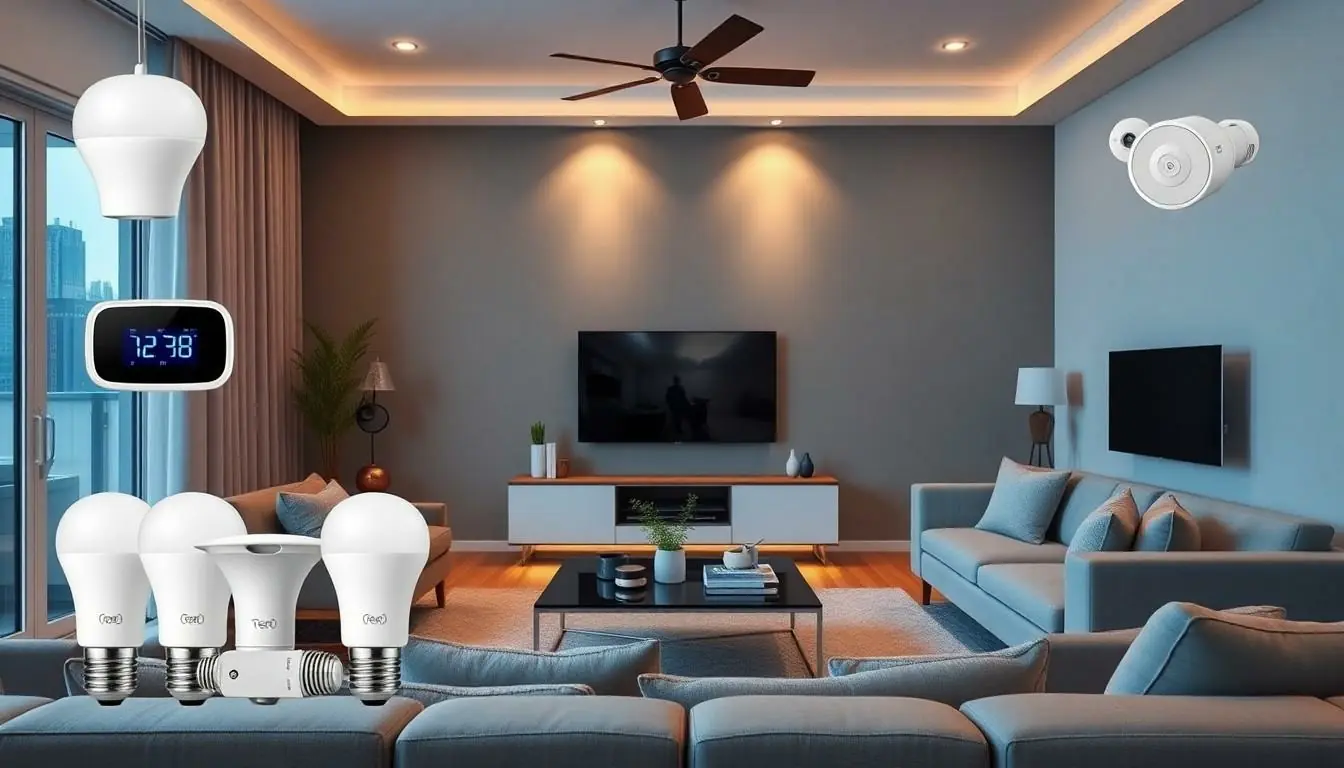Imagine walking into your home and having the lights turn on, the coffee brew, and your favorite tunes start playing—all without lifting a finger. Sounds like magic, right? Well, it’s not sorcery; it’s DIY home automation, and it’s easier than you think! With a little creativity and some tech-savvy know-how, anyone can transform their living space into a smart haven that even your tech-savvy neighbor will envy.
Table of Contents
ToggleUnderstanding DIY Home Automation
DIY home automation allows individuals to transform their living spaces into smart environments. With creativity and basic technical skills, anyone can implement automation solutions.
What Is DIY Home Automation?
DIY home automation refers to the process of setting up devices and systems in a home to increase efficiency and convenience. This involves using smart devices, such as lights, thermostats, and security systems, that individuals can control directly through apps or voice commands. Moreover, homeowners often customize these setups to fit their specific needs by integrating various technologies and platforms.
Benefits of DIY Home Automation
Enhancing convenience is a primary benefit of DIY home automation. Homeowners can automate everyday tasks, such as adjusting lighting and controlling temperature remotely. Cost savings also emerge through the use of energy-efficient devices, reducing utility bills over time. Increased security represents another significant advantage, with smart cameras and locks providing real-time monitoring and alerts. Flexibility in setting up and modifying systems enables users to tailor their automation experiences, accommodating unique preferences and lifestyles.
Getting Started with DIY Home Automation

Getting started with DIY home automation involves understanding individual needs and selecting suitable devices. Following these steps ensures a smooth transition to a smart home.
Assessing Your Home’s Needs
Assessing needs provides insight into necessary improvements. Identify areas that require efficiency, such as lighting, temperature control, or security. Consider routine tasks suitable for automation. Prioritize where automation can make the most impact. Evaluate how much time and energy automation can save. Analyzing these aspects helps in creating a tailored solution that enhances daily living.
Choosing the Right Devices
Choosing devices revolves around compatibility and functionality. Research smart lights, thermostats, and security systems offering integration with existing systems. Look for user-friendly interfaces that simplify control. Compare energy-efficient models to ensure cost savings. Explore options that allow customization per personal routines and preferences. Prioritize devices that offer reliable support and updates for long-term use. Selecting the right devices sets the foundation for an effective home automation experience.
Popular DIY Home Automation Devices
DIY home automation offers a range of devices that enhance convenience and efficiency in everyday life. Smart lighting solutions, smart thermostats, and home security systems stand out as popular choices for homeowners.
Smart Lighting Solutions
Smart lighting solutions provide flexibility and convenience in lighting control. These devices allow users to adjust brightness and color through apps or voice commands. Some popular options include smart bulbs, which can change colors based on mood or activity. Installation often requires simply replacing existing bulbs with smart versions. Compatibility with home automation systems enhances the overall experience, making it easy to create schedules and automate lighting throughout the day. Energy savings also result from using LED smart bulbs compared to traditional incandescent options.
Smart Thermostats
Smart thermostats optimize home energy usage while keeping spaces comfortable. Homeowners can control their heating and cooling systems remotely through mobile apps. Features like learning capabilities enable the thermostat to adapt to the user’s schedule, minimizing unnecessary energy consumption. Many models support integration with smart home systems, allowing for seamless operation alongside other devices. Comparisons show that smart thermostats can reduce energy bills by up to 23% annually, making this an appealing option for cost-conscious users.
Home Security Systems
Home security systems enhance safety and peace of mind for homeowners. These systems typically include smart cameras, motion detectors, and door/window sensors. Users can monitor their property in real-time through mobile applications. Many devices offer features like facial recognition and automatic alerts for suspicious activity, increasing security. Integration with other smart devices enables users to control everything from locks to alarms with a single app. With the ability to monitor homes remotely, families can enjoy a greater sense of security.
Setting Up Your DIY Home Automation
Setting up a DIY home automation system involves a clear understanding of installation and device integration. This ensures a smooth experience while enhancing home efficiency.
Installation Tips and Tricks
Choose a central location for your hub. Ensuring ample Wi-Fi coverage enhances connectivity between devices. Begin with easy installations, for instance, smart bulbs and plugs. Follow manufacturer instructions carefully for optimal setups. Use color-coded labels for wires, simplifying future adjustments. Test each device individually before expanding the network. Document the installation process, as it aids troubleshooting. Prioritize user-friendly interfaces for convenient access. Enlist a friend or family member for assistance if needed. Incorporate energy-efficient devices to maximize savings in the long run.
Integrating Devices for Seamless Control
Maximize compatibility among devices through standard protocols like Z-Wave and Zigbee. Group similar devices, which enhances control and streamlines automation commands. Utilize a common app to synchronize all devices, ensuring a unified interface. Leverage voice control features for added convenience, allowing hands-free operation. Schedule routines that automate actions, such as lighting adjustments at sunset. Review compatibility lists before purchasing new devices, as this prevents connectivity issues. Explore customizable scenes that let users set multiple devices to work together for specific moments. Make adjustments over time, as preferences may evolve. Regularly update device firmware for improved functionality and security.
Troubleshooting Common Issues
DIY home automation can occasionally present challenges. Addressing these common issues ensures a smooth experience.
Connectivity Problems
Connectivity issues often arise when devices can’t communicate effectively. Check the Wi-Fi signal strength in the area where devices are installed. Weak signal may result in intermittent connections, so relocating your router can help. Resetting the device or the router can also resolve glitches. Make sure to verify that firmware is updated, as outdated software may cause connectivity problems. If all else fails, reviewing network settings or consulting the user manual can provide additional solutions.
Device Compatibility
Device compatibility serves as a critical factor in seamless home automation. Always confirm that new devices align with existing systems and protocols. Incompatible devices may fail to integrate, so researching compatibility lists from manufacturers is essential. Using a common platform or app can simplify integration and management of multiple devices. Consulting forums or manufacturer support can also offer valuable insights into compatibility issues. Prioritizing compatibility during the selection process leads to a more efficient and cohesive home automation experience.
Embracing DIY home automation opens up a world of possibilities for enhancing daily life. With the right approach and tools, anyone can create a smart home tailored to their needs. The benefits of convenience, energy savings, and increased security make it a worthwhile investment.
By starting with a clear vision and focusing on compatible devices, homeowners can build a system that not only meets their expectations but also adapts to their lifestyle. As technology continues to evolve, the opportunities for customization and efficiency will only grow. With a little creativity and effort, transforming a living space into a smart home is not just a dream—it’s an achievable reality.


